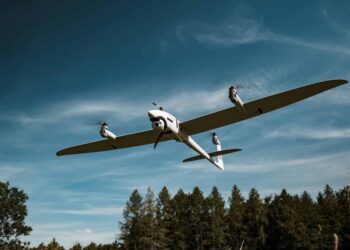US Department of Defense, VIRGINIA BEACH: Two strike fighter squadrons arrived at Naval Air Station Oceana here today, ending a six-month deployment and closing the book on the Tomcat as an asset in the Navy's war fighting arsenal.
The “Tomcatters” of Strike Fighter Squadron 31 and the “Black Lions” of Strike Fighter Squadron 213 were deployed with Carrier Air Wing 8 embarked on the aircraft carrier USS Theodore Roosevelt.
The squadrons' “fly-off” marked the last operational flight of the F-14D Tomcat and the final stage of the squadrons' transition to the F/A-18 E/F Super Hornet. VF-213 pilots will begin F/A-18F training next month and VF-31 pilots, who are transitioning to the F/A-18E, will remain operational until September when they will fly the last Tomcat in the Navy's inventory from Oceana.
“Everyone has worked very hard, pulled together and with purpose to ensure we retire this naval aviation icon appropriately and commensurate with its long and proud legacy,” Cmdr. Richard LaBranche, VF-31 commanding officer, said.
The Navy decided to decommission the Tomcat and move to the Super Hornet to lighten the workload on its people after recognizing the excessive amount of maintenance needed to keep them operational. “It takes about three to four times more maintenance man-hours per flight hour to maintain than the newer Hornet,” LaBranche said. “Retiring the extremely relevant but maintenance intensive Tomcat was a way to save the exhaustive efforts of our people and better spend their labors.”
For the pilots who fly them and the crews who keep them operational, the loss of the Tomcat hits close to home. “I will miss flying the Tomcat very much,” LaBranche said. “Saying good bye to the Tomcat will be like saying good bye to an old friend, but in the best interest of our people, it must be done.”
Throughout its 32-year service to the fleet, the Tomcat has been synonymous with excellence. Since the first aircraft entered operational service in September 1974, the Grumman Aerospace Corporation-built F-14 has seen numerous upgrades and modifications to meet the demands of the Navy as the premier carrier-based multi-role strike fighter. “It is one of the greatest fighter planes in history,” Lt. Chris Rattigan, a pilot with VF-31, said. “When you think of naval aviation, you think of the Tomcat.”
The Tomcat saw its first major improvements to the initial design with the F-14B, introduced in November 1987, which incorporated new General Electric F-110 engines. In 1995, an upgrade program brought the Tomcat new digital avionics and weapon system improvements. “The F-14 may be old, but with all the upgrades (over the years), there isn't anything out there tougher and more capable than the Tomcat,” Petty Officer 2nd Class Michael Houlihan, an aviation structural mechanic with VF-31, said.
During this deployment, VF-31 flew more sorties and with the highest sortie completion rate of any other Tomcat squadron in recent history, LaBranche said. With a more than 99 percent sortie-completion rate and a 100 percent on-target rate when ordnance was expended during this, their final deployment, VF-31 is confident they sent the Tomcat out on a high note.
“Our successes on this deployment have been huge,” Houlihan said. “We accomplished more than we had set out to do. I honestly think that VF-31 has proved that these aircraft, despite the amount of maintenance required to maintain it, have a lot of life left in them.”
While deployed, VF-31 provided invaluable close-air support to troops on the ground and, together with VF-213, completed 1,163 combat sorties totaling 6,876 flight hours and dropped 9,500 pounds of ordnance.
“Our entire crew is acutely aware of the historic nature of being the very last Tomcat squadron,” said LaBranche, noting the attention VF-31 is facing as they return from this final deployment in support of Operation Iraqi Freedom.
“To see the sailors of this command perform so magnificently throughout five months of arduous combat operations has been inspirational for me,” LaBranche said. “(The unit) has met every challenge head-on, succeeded in every endeavor and left a legacy befitting our new slogan as 'The Last Cat Standing.'”
Germany says adding explosive drones to weapons arsenal
Germany said Friday it would buy explosive drones for the first time as Berlin boosts investments in its armed forces...









